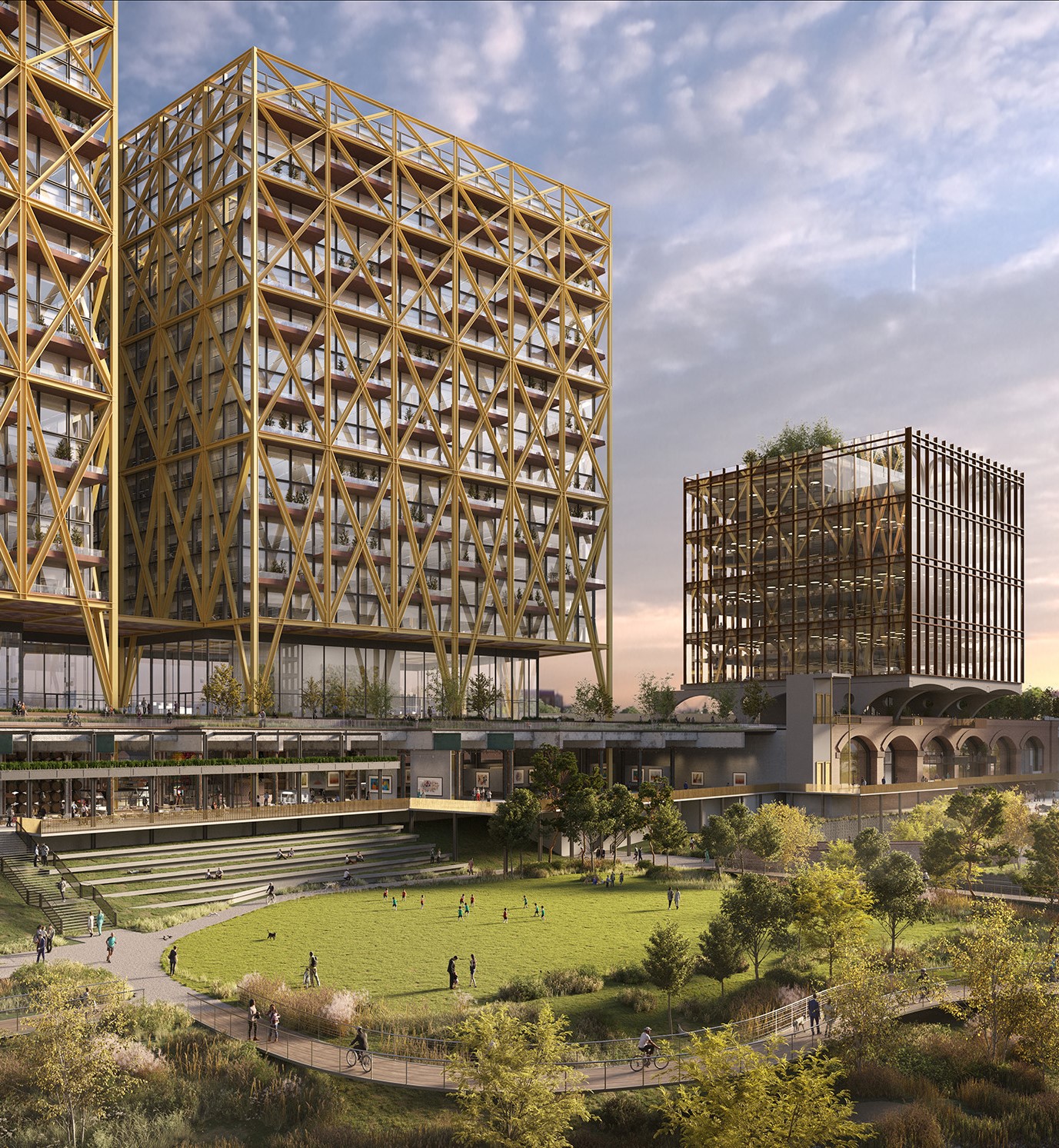
Town centres have taken a battering in the past year, with many shops and services forced to close during lockdowns and growing numbers of stores going out of business.
But even before Covid-19, UK high streets were already under pressure. Economic recessions, rising business rates, higher rents, the growth of online shopping and development out-of-town retail parks have left Britain’s town centres struggling to survive.
Last month, Planning magazine brought together a panel of experts to discuss the future of town centres. Among the issues considered were trends affecting town centres, how demand for town centre property is changing post-pandemic and how developers are responding to changes in market demand and planning laws.
The bigger picture: online shopping and working from home
Jennet Siebrits, head of CBRE UK’s research team, gave a helpful overview of two key trends affecting town centres.
In the past decade, e-commerce has seen a dramatic increase in activity. Since 2011, the value of online shopping has mushroomed from £23 billion to £58 billion –a 158% increase. But in 2020, even that figure was eclipsed, with the value of e-commerce rising to £84 billion – a 44% increase in just one year. The evidence from the first national lockdown suggests that this step change is here to stay.
The impact of this, along with the Covid-19 restrictions, has been grim for town centre stores. Over 11,000 shops closed in 2020, and while not all of those closures were due to online shopping, it’s clear that e-commerce has been a real driver of this.
Jennet suggested that, as the restrictions ease, it’s likely that supermarkets, along with in-store health and beauty and DIY stores will continue to attract customers. But other sectors will have to come up with innovative ways to lure consumers off their iPads.
Jennet also highlighted the increased move towards home working. Once people return to their workplaces, it’s likely that many will ask to continue working from home, at least for part of the working week.
The rise in home working may also affect demand for residential property, with more people moving further away from city centres. This could have a knock-on effect for ancillary services like coffee kiosks and sandwich bars, with local town centres capitalising on the losses experienced by city centres.
The legal perspective: changes to planning laws
David Mathias, a specialist planning solicitor at Shoosmiths law firm described some recent planning law changes that have particular relevance to town centres.
Since the demise of Woolworths in 2008, more and more UK department stores have been closing down, leaving big gaps on the high street. In future, it’s likely that many property developers will want to convert from retail to residential.
Until recently, permitted development rights for conversion to residential only applied in a limited set of commercial uses. But the UK government has announced new permitted development rights in England enabling greater flexibility on conversions without the need for planning permission. These will go ahead in August, subject to certain conditions.
In addition, further legislation on expansion of permitted development rights introduced last summer allows the construction of an additional storey on freestanding blocks and buildings on a terrace to create additional housing, and the demolition of buildings built before 1990 and construction of new dwellings in their place.
The government has argued that these changes will help to revive town centres, although others believe easing planning rules for developers will have the opposite effect.
The developer’s perspective: re-imagining Manchester
Martyn Evans from the U+I Group offered his view of how developers are responding to changes in market demand and planning. He did so using U+I’s development at Mayfield in Manchester.
Located next to Piccadilly railway station, in the centre of the city, this 24 acre-site is being redeveloped from derelict railway land. A consortium of Manchester City Council, Transport for Greater Manchester and London & Continental Railways (LCR), along with U+I, has been working to regenerate the area, with the first buildings due for completion next year.
Right from the start, the consortium focused on the importance of creating a place where people want to live, work, rest and relax. One important feature of the development is a seven-acre park. Although it was planned into the scheme years ago, this green space has become all the more significant in the past year.

The pandemic has demonstrated the importance of green space as a vital part of city living, both for physical health and mental wellbeing. Such spaces not only attract workers, residents and visitors, they also increase the value of developments. And because decisions about commercial property are increasingly being taken by HR teams rather than finance departments, the wellbeing benefits of workers’ surroundings are being taken more seriously. In short, understanding quality of place gives developers more of a competitive edge.
The local authority perspective: managing change
To conclude, Michael Kiely from the Planning Officers Society looked at what local planning authorities can do to help sustain town centres.
Michael described some of the planning tools local authorities can use, including strategic planning, masterplanning and local plans. But with recent changes in planning laws, including the use classes order, Michael argued that policies such as Town Centre First may be ineffective.
However, local authorities can still make a difference, through partnerships with other stakeholders, such as land owners and Business Improvement Districts (BIDS), and the use of intervention and compulsory purchase powers.
In closing, Michael suggested the need for a licensing or permitting regime to manage and curate activities so that they do not cause harm and town centres can thrive.
Future perspectives: rethinking town centres
A £150m project to revamp London’s Oxford Street signals that high streets are already re-imagining themselves as leisure-focused and “experiential shopping” centres. And the Mayfield site in Manchester has the potential to transform a part of the city centre that has been underused for decades.
These are just two examples of the planning community working together to help sustain town centres. Britain’s high streets face substantial challenges, but this interesting discussion suggested there are good reasons to optimistic about the future.
A recording of The Future of Our Town Centres discussion is available to watch on-demand at the Planning magazine website.
Further reading: more on town centres from The Knowledge Exchange blog
Share
Related Posts
A recent item on BBC Radio 4’s Today programme generated an unusually high number of responses from listeners. A man who had lost his job in the financial services sector at the age of 57 described his difficulty in trying ....
Tackling geographical inequalities is critical for ensuring that all parts of the country have the potential to prosper. When the UK was a member of the European Union, it was entitled to a share of funding from the EU’s structural ....
By Ian Babelon A new-old concept for proximity “Are we there yet?” Parents may patiently nod to their children’s insistent nudges on a 20-minute journey to… somewhere. Quite rightly, researchers have asked: twenty minutes to what? The answer may well ....

